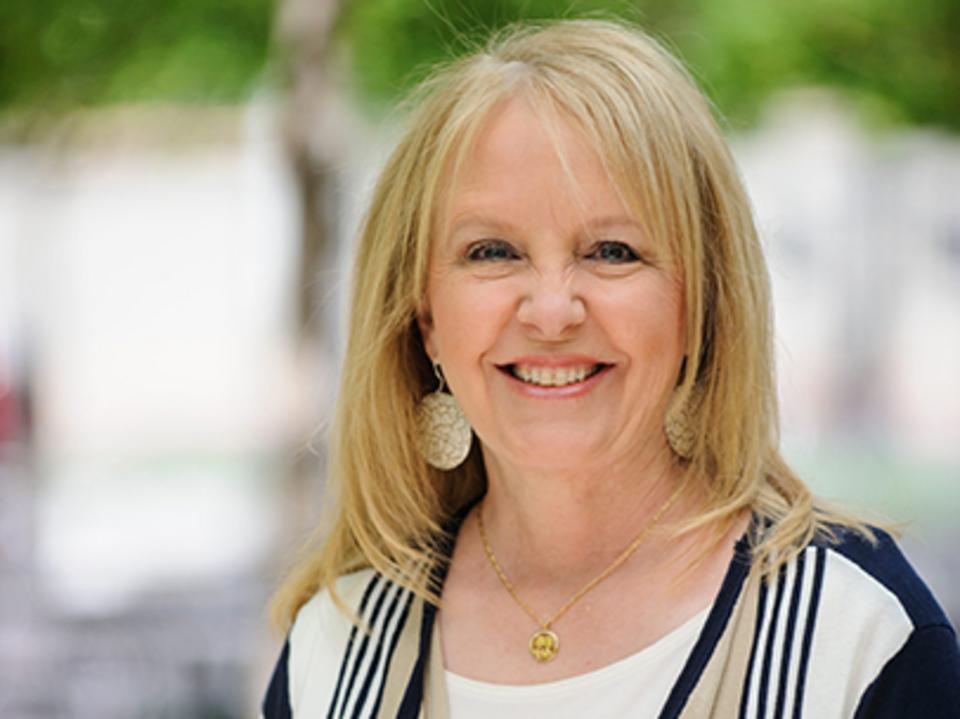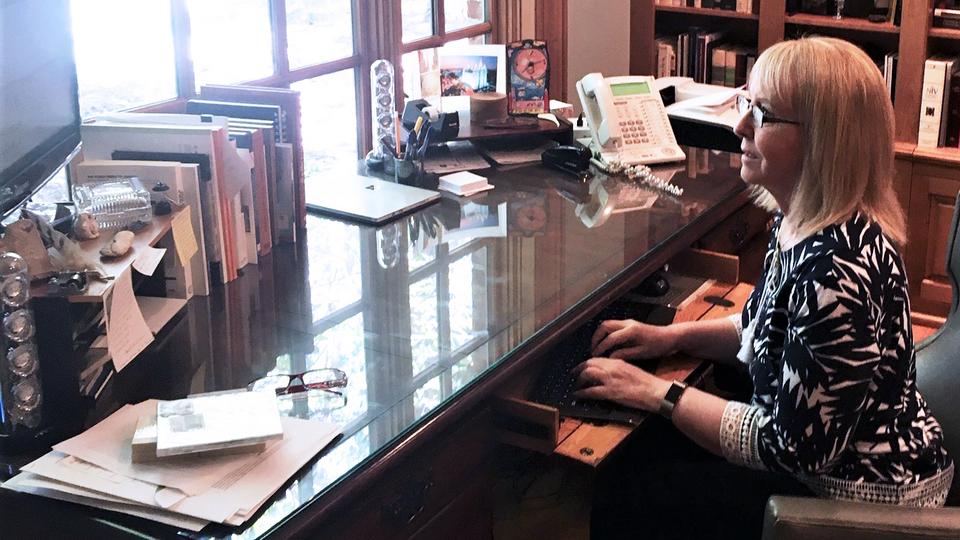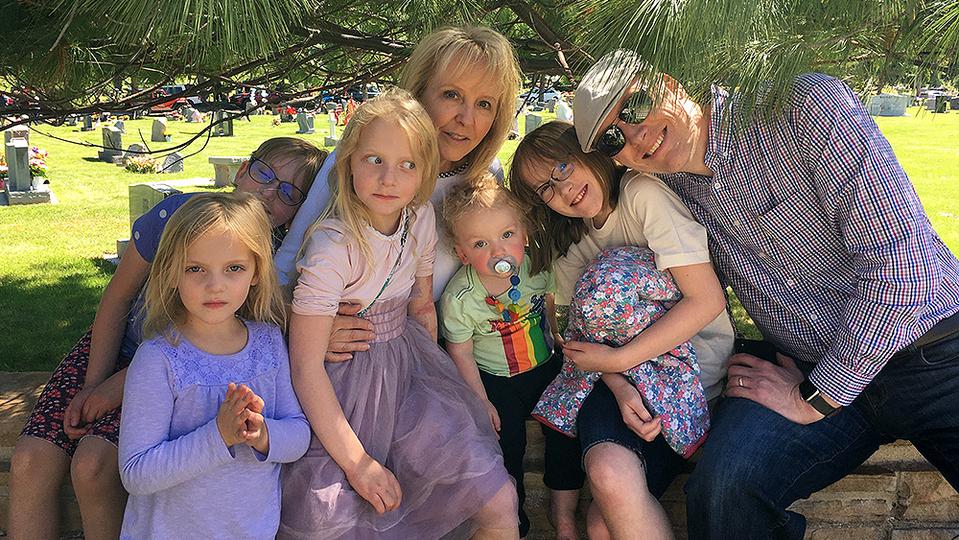
Women of Covenant-Ulrich
Wendy Ulrich, Relief Society board member. Photo courtesy of Wendy Ulrich, courtesy of Church News.All rights reserved.This story appears here courtesy of TheChurchNews.com. It is not for use by other media.
By Wendy Ulrich, Relief Society general board member
Editor’s note: This narrative is part of a Church News series titled “Women of Covenant,” in which women of the Church discuss their personal experiences with priesthood power and share what they have learned through following President Russell M. Nelson’s counsel to “labor with the Spirit to understand God’s power — priesthood power” (“Spiritual Treasures,” October 2019 general conference).
In recent years, apostles and prophets have clarified that covenant women in The Church of Jesus Christ of Latter-day Saints can serve with priesthood authority and, as they keep their covenants, are entitled to priesthood power in their lives. Many of us wonder if we are living up to those privileges, or what it would even look like to do so. But “even as the Lamanites, because of their faith in me at the time of their conversion, were baptized with fire and with the Holy Spirit, and they knew it not” (3 Nephi 9:20), covenant women have been acting with priesthood authority and power throughout our lives, even if we “knew it not.”
As I have studied the words of Church leaders, I’ve realized that the Church of Jesus Christ has a unique understanding of what priesthood is. Outside of the Church, priesthood is simply defined as the office or calling of a priest. And a priest is someone authorized to perform religious rituals.
We too might define priests as those authorized to perform rituals (ordinances). But as members of the Church of Jesus Christ, we see priesthood as much more.

Women of Covenant-Ulrich
Wendy Ulrich, Relief Society board member. Photo courtesy of Wendy Ulrich, courtesy of Church News.All rights reserved.In the largest sense, priesthood is the authority and power of God to not only create, redeem and govern the universe, but to empower others to join in His work and assist Him. No other Christian church understands God in this way. God delegates a portion of this all-encompassing priesthood authority and power to ordinary men and women, allowing us to participate and officiate in His holy work.
We sometimes use the words “power” and “authority” interchangeably, but we can have one without the other. People receive priesthood authority in the Church by ordination, calling or assignment from those holding priesthood keys, thus ensuring the gospel is taught and its ordinances administered with order and consistency.
In addition, men and women are authorized through temple recommends to receive temple covenants and sealings that bring spouses into “an order of family government” and “the fulness of the Melchizedek priesthood,” with authority to govern and teach their family (Ezra Taft Benson, “What I Hope You Will Teach Your Children About the Temple,” Ensign, August 1985; see also Dallin H. Oaks, “Priesthood Authority in the Family and the Church,” Ensign, November 2005).
Priesthood authority gives us permission to do certain things, while spiritual power gives us lasting influence in others’ lives. This heavenly power “cannot be controlled nor handled [except] upon the principles of righteousness,” and with the revelatory companionship of the Holy Ghost (Doctrine and Covenants 121:34-46). The Holy Ghost inspires us to flexibly adapt the uniform gospel message to the needs and capacities of individuals and can confirm spiritual truth to their soul.
When we act with both priesthood authority and spiritual power, we have power in the priesthood.
I was recently reminded by my son of an experience we had when he was 10 or 11. He and I were working together to set up an activity at the church, and he began asking questions about how to know when the Holy Spirit was speaking to him. He probed and pushed back when my answers were confusing or too simplistic. I got a little exasperated trying to communicate something that frankly cannot be understood through words alone.
Looking for help, I sent a silent prayer heavenward.

Women of Covenant-Ulrich
Wendy Ulrich with with her son Mike and some of her grandkids. Photo courtesy of Wendy Ulrich, courtesy of Church News.All rights reserved.What occurred to me next could easily have backfired if it had been only a gimmick. I looked Mike in the eyes and said, “Mike, let’s try an experiment. What am I thinking right now?”
He looked back at me, a little confused. Then curious. Then suddenly sure. He said, “You’re thinking you love me.”
I said, “That’s right, Mike. I love you, and wherever it is inside of you that you knew that, and however you felt that to be true, that is how the Holy Ghost speaks to you. If you will remember what that felt like, if you’ll act on feelings and ideas that come to you in that same place inside, you will get better and better at recognizing truth and spiritual guidance in your life.”
He nodded. No more questions.
Mike and didn’t speak of that experience again until he recently drew on it to teach his own children about the Spirit. Mike learned all those years ago that the Holy Spirit could communicate unspeakable things to his soul. He never forgot, and now he is using that experience to teach others.
What women and men receive priesthood authority to do, we have the privilege and responsibility to do with spiritual power. We thus participate in God’s work of passing on all He has to the next generation.
